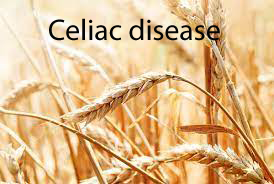
Celiac disease has become a very common problem among children. It occurs when the body is unable to respond to gluten.
Chia seeds have stolen the limelight in the supermarket, showing up everywhere – from granola bars, biscuits, beverages etc. Chia is packed with omega-3-fatty acid. Because they have mild and nutty flavor, they are easy to add to a variety of foods and drinks.
Gluten is one of the types of protein found in wheat, barley and rye. When gluten is ingested in any form it triggers an immune response, which is not normal. This results in damaging the inside of the small intestine where maximum amount of nutrients are absorbed.
A careful physical exam is important to be performed by the doctor. A blood test should be performed to measure higher levels of certain antibodies (substances produced by the immune system to fight harmful invaders) found in people with celiac disease.
Few more test are important to detect nutritional deficiencies such as low level of iron. A stool sample can also be tested to detect fat in stool, since celiac disease prevents fat from being absorbed from food.
This can also leave patients susceptible to other health problems including
Osteoporosis, which weakens bone and leads to fractures. This occurs because the patient has trouble in absorbing enough calcium and vitamin D. For those suffering in the age of 20s, specially women, can lead to birth defects such as neural tube defects (improper formation of spine) caused by poor absorption of folic acid.
Gluten intolerant children will show slow growth and weak bones. Children start losing weight, they complain diarrhea or feel weak and tired for many days and show tingling sensation in the legs (caused by nerve damage and low calcium levels), musculoskeletal problems (muscle cramp, joint and muscle pain), digestive problem, abdominal bloating, pain, gas, diarrhea, pale stool and weight loss.
If precautions are not taken early in life and the intestine of the patients are damaged completely, then at this stage a gluten free diet may not help. These patients may have to receive nutritional supplements through an IV.
Family history and age are the two major causes of celiac disease. If parents are suffering from food allergies, such as hay fever, one is at increased risk of allergy to wheat or other food. Wheat allergies are most common in babies and toddlers who have immature immune and digestive systems. At times with constant care, most children out grow wheat allergy, but adults can develop it at any time in life.
LIFESTYLE AND HOME REMEDIES
- Keep others informed
If your child is suffering from wheat allergy, make sure you inform principal and teachers at school. - Always read labels
Wheat proteins especially gluten are used as food thickeners. Also don’t assume that once you have used a certain brand of a product that’s always safe. Manufactures tend to change ingredients for better acceptability in the market.
Shop for gluten free food
Some of the specialty stores and super market offer gluten free foods, which are safe for people with wheat allergies.
Dine out cautiously
Inform restaurant staff about your allergy. Order simple dishes prepared with fresh foods. Avoid foods that may have hidden sources of wheat protein such as sauces or deep fried food that might be coked with other food containing wheat.
For more information on seeds, e-mail the writer at info@wellnessbeyonddiet.com. She can also be contacted at 08427162181
